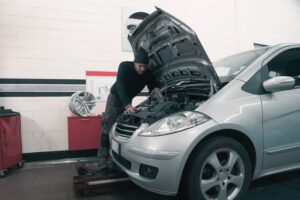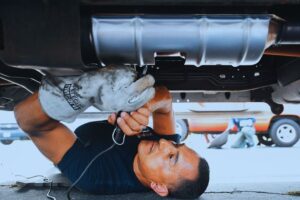It’s easy to panic when the “check engine light” comes on in your car. When it does turn on, a common question is how long can you drive with the check engine light on?
With the Check Engine Light on, you can still drive your car for 50 to 100 miles (80 to 160 kilometers). Continue taking several separate trips until the car’s system assesses all the car components’ status several times.
“Separate trips” means turning off the engine and starting another trip every time. In other words, you need to divide the 100 miles limit into several trips.
When the Check Engine light comes on, that means there’s a problem somewhere in some parts of the car’s emission system. But if your car is not performing strangely, it is still safe to drive. Just have your car checked or repaired as soon as you can.
Read on to learn more about how long you can safely drive your car even if its Check Engine light is on and the things you can do to repair and solve this problem.
How Long Can You Drive with Check Engine Light On?
When the Check Engine light comes on, you can still drive it for 50 to 100 miles, equivalent to 80 to 160 kilometers. It would be best to take separate trips to help your car system assess its own status. Separate trips mean turning off the engine, then driving again.
This light is also called Malfunction Indicator Light or MIL. It serves as a warning that tells you something is wrong with your car, as detected by its computerized engine management system.
If a component in this system is malfunctioning, a sensor will be activated, which will trigger this light to come on.
If you notice, each time you start the engine, this light comes on and then fades away in about six seconds. But if it stays on, don’t panic.
If it suddenly comes on while you’re driving, don’t panic. On your dashboard, this light is a pictogram of an engine. When it lights, it says “CHECK ENGINE SOON” or “CHECK ENGINE.”
How far can you drive with the check engine light on? You can still drive your car for 50 to 100 miles. But don’t drive it to the maximum limit. Divide the 100 miles into three or four trips.
Turn the engine off after each trip. Then start it again. This will give the car’s computerized management system enough time to check its components and assess where the problem is coming from.
As long as your car is not performing strangely, you can still drive it safely. The system is just telling you that something is going wrong that you need to check. If you ignore it and continue using your car without resolving the issue, you risk more serious damage to your car.
Don’t disregard the Check Engine light if it turns on. Allow it to be checked by a qualified mechanic. Ignoring this issue may lead to your car’s inefficient performance, or it may even result in a very costly engine repair.
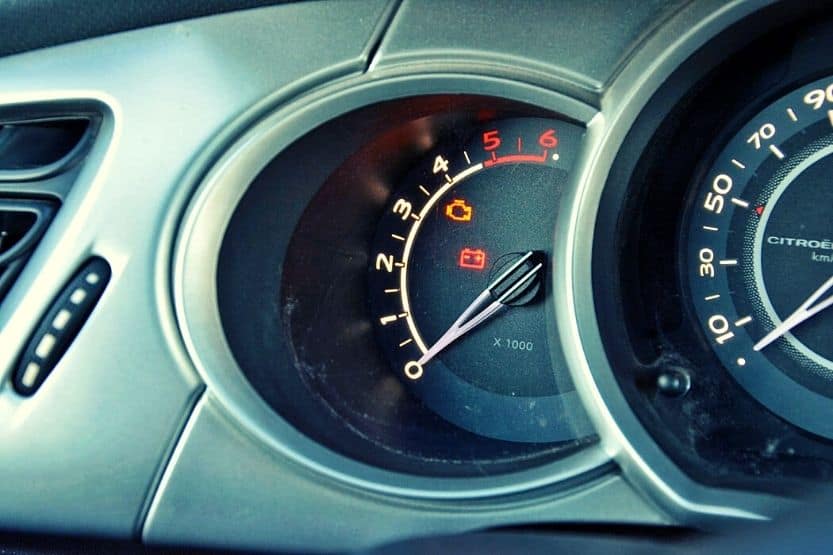
Is the Check Engine Light Urgent?
The Check Engine light typically works in two stages:
- Steady – this indicates a minor fault; and
- Flashing – this indicates a more serious fault.
1. Steady Light
If this light is steady or solid, it is still safe for you to drive your car, all things being considered. If your car’s essential parts are all working properly, you can still drive up to the maximum limit of 100 miles.
But watch out for the other warning lights on your dashboard, including oil pressure and coolant temperature.
2. Flashing Light
If this light is flashing, you have to stop the car and turn the engine off immediately. The flashing light means you have an emergency. This often indicates a misfiring engine.
If you keep on driving the car, irreversible damage to its engine may result. It is typically the catalytic converter that is damaged. Replacing this car component is very expensive.
Will This Light Turn off by Itself?
Yes, this warning light can go off by itself – if the issue has corrected itself. If this happens, you don’t have to bring it in for a checkup or repair. But if the light remains solid, you really have to address the problem.
If there is really an issue with the car’s engine or any parts, the light will not go off. There is a corresponding error code on the car’s computerized management system in this context and for every issue.
The Check Engine light will only turn off once the particular error code is addressed and cleared from the computer’s memory. If it detects another failure, the light will turn back on, and another warning code is triggered.
Is It Still Safe to Drive with the VW EPC Light On?
What to Do If Check Engine Light Comes On?
It is only natural for you to be alarmed when you see this light come on. To allay your fears, follow these steps in resolving the issue:
1. Stop the Car If the Light Is Flashing
This light is typically in the middle of the dashboard or right in front of you. If it lights up and is flashing for over six seconds, you may have an emergency. Slowly pull over on the roadside and turn off the engine.
2. Keep on Driving If the Light Is Solid
If the car is performing normally, you can safely continue driving. But observe its drivability. Is the car driving straight or a bit wonky? Is the handling still the same, or has it gone bad?
Do you see any smoke being emitted by the car? Are there any unnatural sounds coming from the engine bay? Observe and take note of any difference in the behavior of the car.
3. Try to Diagnose the Problem
If you have a car diagnostic app, use it to diagnose the problem. There are inexpensive apps that you can use to perform a simple diagnosis of car problems. It can detect car faults and have the option to clear fault codes. It is possible to save the trip to a mechanic if you have this app.
4. Assess the Problem
Determine the severity of the problem. Aside from the Check Engine light, check your dashboard. It may also indicate an overheating engine or low oil pressure, and so forth. If these warning lights are turned on, pull over and stop the car on the curb.

There are cars with Check Engine lights that turn red and yellow. Red means it is an emergency, and yellow means you can still have it diagnosed.
If you see that it requires immediate attention, you have to call for a towing service to bring your car to a qualified mechanic to have it checked and solved.
5. Check the Gas Cap
If this warning light turns on after refueling, stop the car on the roadside and check if the gas cap is tight in its place. Although it may take several engine restarts, this could resolve the issue before the warning light goes off.
The warning light probably came on because it detected a leak in the car’s evaporative system. The latest car models don’t usually encounter this particular issue because they are equipped with specific gas-cap indicator lights.
Reasons Why the Check Engine Light Comes On
There are many reasons why your car’s Check Engine light will come on. To give you an idea, here are some of those:
1. Bad Catalytic Converter
The car component that controls the emission of your car is the catalytic converter. This component converts carbon monoxide and other dangerous gases coming out of your car’s exhaust system into less dangerous byproducts.
If it is malfunctioning, the engine performance will be affected, and its fuel consumption will go up. It’ll cost you about $500 to $1000 to replace a bad catalytic converter. If your car has multiple converters, you could be spending exorbitant amounts on replacing them.
2. Bad Fuel or Gas Cap
A loose, faulty, or cracked gas cap is another reason why your Check Engine light comes on. A bad fuel cap will allow fuel vapor to escape from the fuel tank. There are more serious cases where the leak is coming from the upper part of the fuel system.
Replacing a bad gas cap or simply tightening the loose cap will solve this problem. After correcting the problem and after driving for a while, this light will go off. If it’s still on, seek the help of a mechanic to check and repair the problem.
3. Bad Spark Plugs
The Check Engine signal will also turn on suddenly if the spark plugs on the engine are not working properly. If you haven’t checked the spark plugs for so many months, which means you haven’t seen them yet if they ever need to be replaced. Don’t wait until this warning light turns on.
Inspect the spark plugs and if they are full of soot, clean them, and if the gaps are already over the limit or are already worn out, replace them.
4. Bad Mass Airflow Sensor
A faulty MAF sensor can also trigger the Check Engine light. Typically, it is a dirty filter, or it is not correctly installed. Repairing this problem is highly technical. If this is your problem, have it checked and repaired by a professional mechanic.
This is not an emergency case. But if you will not resolve this issue, the efficiency and performance of your car engine will deteriorate. So, have it seen by a qualified mechanic soon.
5. Bad Oxygen Sensor
The Oxygen Sensor measures the amount of unburned oxygen present in your car’s exhaust system. It sends this information to the car’s computer to adjust the air to fuel ratio going into the engine.
If this sensor is malfunctioning, it will lead to reduced fuel economy and potential damage to your catalytic converter and spark plug problems.
6. Bad Ignition Coil
The Check Engine light will likely turn on in case the ignition coil shorts or burns. This coil works like an induction coil. It converts the car’s voltage to the required volts to induce the spark plugs to produce sparks that will burn the air and fuel mixture inside the engine’s cylinders.
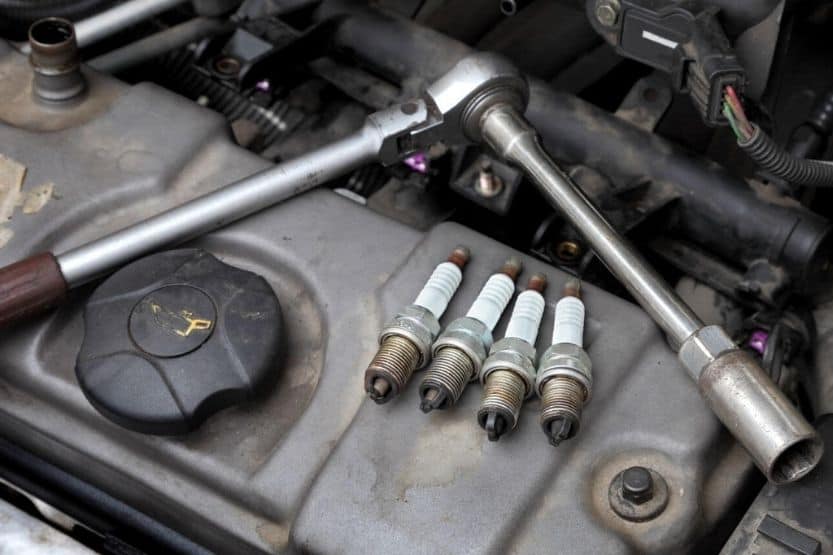
This whole process cannot take place if the ignition coil is malfunctioning. It would be best if you asked a professional auto electrician to check or repair it.
How Much Is a Check Engine Light Test?
On average, a Check Engine light inspection can cost from $80 to $90. After diagnosing the problem, the mechanic will give you a quote for the required repairs.
If it does not involve major repairs, you can choose to have the car repaired in the car repair shop or at your home or office, with their corresponding charges. Most major repairs can only be performed at car service shops.
Factors That Affect How Long You Can Drive with Check Engine Light On
You can still drive your car even if its Check Engine light is on. But you will be limited by the following factors:
1. Drivability of the Car
If your car is not performing strangely, you can drive it from 50 to 100 miles. Be careful though.
If at any moment there are audible noises that are coming from the engine bay, or if there is a cloud of heavy black smoke coming out from the exhaust pipe, pull over at once and stop the engine.
2. Solid or Flashing Light
If the Check Engine light is steady and solid, you can still drive the car up to the maximum limit. Pray that the problem resolves itself and the warning light goes off. If the light keeps on flashing, there could be a serious engine issue that forces the light to keep on flashing.
You need to pull over at once and cut the engine off. Don’t try to restart the engine. Call for a towing service so that you can bring your car to the nearest auto repair shop.
Tips for Driving with Check Engine Light On
For your own safety, consider the following tips if the Check Engine light comes on suddenly.
- Slow down. Then, pull over to the curb and turn the engine off;
- Observe the Check Engine light;
- If the light is steady and solid, you can still drive it for a short trip. If the light turns off on its own, the problem could have resolved itself. You can go on with the rest of your trip; and
- If the light flashes continuously, you have a more serious problem. You can’t restart the engine.
Your best option is to call for a towing service and have your car seen by a professional auto mechanic or auto electrician.
Conclusion: How Long Can You Drive with the Check Engine Light On?
It is safe to drive your car for 50 to 100 miles (80 to 160 kilometers) regardless if the Check Engine Light signal is on. Take some individual trips so that the car’s system can assess all the car components’ status on each trip.
“Individual trips” means turning off the engine and starting another trip every time. In other words, you don’t use up the 100 miles limit in just one trip but on several trips.
When Check Engine Light is on, this might be due to a bad catalytic converter, bad ignition coil, bad spark plug, among others. If the light is solid, you can still drive safely. If it flashes continuously, then you better call an expert or a towing service, especially if the engine won’t come on.
Related reading:
Check Engine Light On and Off Intermittently [Causes and Fixes]
What Does It Mean When the Malfunction Indicator Light Come on?
What Causes the EPC Light to Come on?


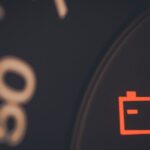


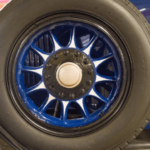
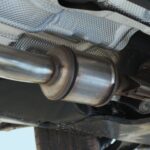
![Read more about the article How to Test a Spark Plug [With and Without a Spark Plug Tester]](https://roadsumo.com/wp-content/uploads/2021/05/how-to-test-a-spark-plug-300x200.jpg)
